The Kashi-Vishwanath temple’s mahant Rajendra Prasad Tiwary’s stinging comment —“Ye log dharma ke vyapari hain (These people are the merchants of religion)”—was aimed at none other than Prime Minister Narendra Modi and his courtiers. Tiwary had said these words specifically referring to the Kashi Vishwanath corridor, a new pathway to the temple of which he is the pujari , inaugurated recently by Modi with much fanfare . For the Bharatiya Janata Party ( BJP) governments at the Centre and in the State of Uttar Pradesh , the new pathway was an instrument to etch the names of their leaders , including Modi and Chief Minister Yogi Adityanath in the history of the ancient town and its holy temple . They claim to have made the “ way to Lord Shiva “ smoother and easier for devotees . But for people like Tiwary and hundreds of other “ messengers of God “ in Varanasi, the pathway , which was built demolishing hundreds of smaller temples and historical buildings , including libraries dating back to several centuries , is a symbol of crass commercialisation and kitsch absolutely adverse to the tradition and culture of Varanasi .
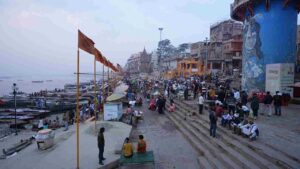
And indeed , voices of rebellion such as the ones of mahant Rajendra Prasad Tiwary’s , are deeply ingrained in the social ,cultural political and academic fabric of Varanasi since time immemorial. That it has come in the midst of an intense political campaign in the town for the last and final phase of the Uttar Pradesh assembly elections ,scheduled for March 7 , adds greater significance to the continuation of this historical stream of dissent .
On his part , the Prime Minister has been doing everything at his command to save his prestige in Varanasi , the constituency he represents in the Lok Sabha; Road shows, door to door campaigns, rallies and of course his trademark rhetorical speeches. Apparently, he feels that a poor show of the BJP candidates in the assembly elections in this part might jeopardize his future prospects.Uttar Pradesh chief minister Yogi Adityanath is another mahant—mahant of the Gorakhnath temple—depending on Narendra Modi to salvage the situation so that he (Yogi) could retain power in Uttar Pradesh. As many as 54 assembly seats are scheduled for polling on March 7 in Varanasi region—part of what is also known as the eastern Uttar Pradesh .
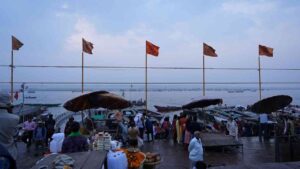
This region is mired in poverty, backwardness, deprivation and inequality. But it is Varanasi—known as Kashi in the Vedic and post-Vedic literatures—that has been the seat of the high level of creativity, nuanced discourse in spiritualism, metaphysics and literature ever since its inception. Be it Shaivism, Vashnavism, Buddhism, Islam, right and left wing political philosophies—Varanasi has given space to everyone but has never allowed anyone stream or individual to conquer and dominate it. The history of Varanasi is full with the seers, saints, poets and writers challenging orthodoxy over the centuries and decades.
The rebellion against the then Brahmanical orthodoxy comes to the fore in this couplet of Tulsi Das , author of RamcharitManas: “Maang ke khaibo, Masit mein rahibo, Lebai ke ek and debai ke dou (I will eat by seeking alms, will live in a mosque, neither I have to take anything from you nor I am supposed to give anything to you). Researchers have interpreted Tulsi Das’s words as his rejection to the orthodox Brahmin priests who didn’t give him recognition for writing in the people’s language of Awadhi as against Sanskrit that they thought as the only godly language.
It was Munshi Premchant—by far the greatest of the Hindi novelists born and brought up at Lamahi, a village in the vicinity of Varanasi—who wrote in 1930’s: “ Communalism feels shy in coming alone; it comes clothed in nationalism”. It was at Akbarpur—close to Varanasi that the iconic Socialist leader, Ram Manohar Lohia was born . His early experiments with his unique brand of socialism had also its beginnings in this region. Incidentally, the Samajwadi Party that has emerged as the prime challenger to the BJP has built its political edifice on Lohia’s philosophy. Lohia was known for his trenchant rebellion against the entrenched power represented by the Congress then.
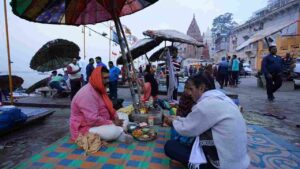
It was at the Kashi-Vishwanath temple where Bismillah Khan—a devout Muslim who religiously did his namaz five times a day—found the right ambience to hone his skill and mastery over the musical instrument of shehnai . Khan Saab took his art to its highest glory in the world. He stayed indebted and devoted to Lord Vishwanath, the Ganga and the ambience for whole life.
Way back in 6th century BC a prince from Lumbini (Nepal), Siddharth Gautam Buddha acquired enlightenment at Bodhgaya (Bihar) and gave his sermons rooted in rebellion against the Vedic order at Sarnath in Varansasi. And Kabir—the saint poet from Varanasi—attacked orthodoxy in the manner only he could have done: “Je tun babhan Babhni jaya, aani dwar kah-e na aaya; je tum turk-turkini jaya,bhtr-e khatna kah-e na karaya (If you claim distinctness on the basis of being a Brahmin why didn’t you came in this world from a distinct route; if you claim to be a Turk-Muslim why did you not get circumcised in your mother’s womb)”.
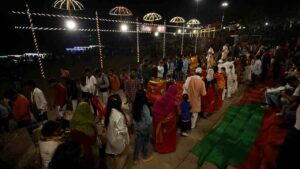
Banaras or Varanasi has been full of the vision for new possibilities. The former Prime Minister, Late Atal Bihari Vajpayee was rejected from Mathura in Lucknow in his first election in 1957. But he made his debut in the Lok Sabha from Balrampur—part of the larger Banaras region. The region saw immense possibility in Vajpayee very early. Varanasi’s vision in seeing new possibilities gets reflected in poet Feraq Gorakhpur’s verse,”Teray kadmon ki aahat pahle him hum bhaanp leteay hain; Tujh-e ai jindagi hum door se pahchant lete hain (We notice your footsteps very early! O life! I understand you from quite afar)”.
Thus when the Kashi-Vishwanath Mahant Rajendra Tiwary challenges as powerful a person as Modi and his acolytes he keeps up to the rebellious tradition of Varanasi. (Ye log Banaras ko maal bana rahe hain,yeh sadhna ke sthali hai (These people—read Modi,Yogi and likes—are morphing Varanasi into an abode of consumers and consumerism. It is the land of penance and devotion)”.
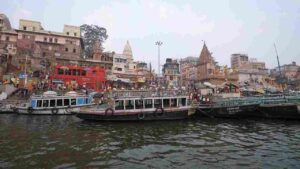
It’s hard to tell how long NarendraModi will represent Varanasi in the Lok Sabha. But what is very clear is his style of politics—interpreting Hindutva as designed by the Rastriya Swayamsevak Sangh and othering the minorities—is antithesis to what Varanasi has represented over the centuries .
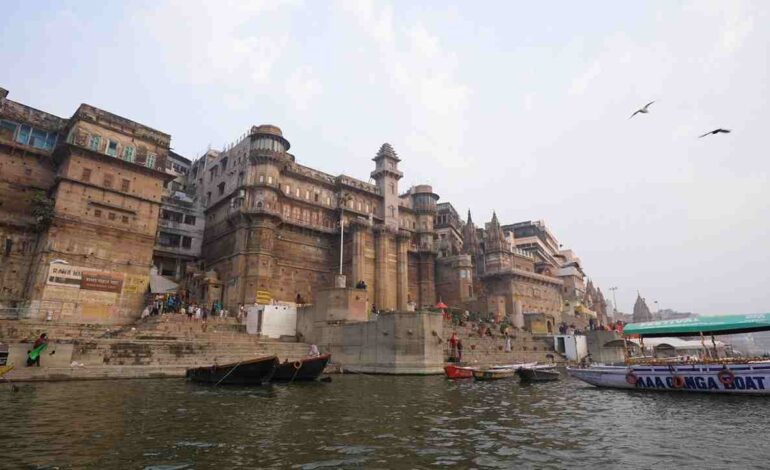











This is a biased and one sided view of what is being done in Varanasi. It may be vested interests which are driving the development in Varanasi nevertheless a lot has improved. Past has been a witness that change is the only constant. The world has been evolving for billions of years and will continue to do so irrespective of perceptions, whether right or wrong. As far as politicians are concerned , they have to take democratically favorable decisions to stay in power and BJP is far better than Samajwadi/Congress or other parties. There maybe some bad eggs but definitely not our Prime minister . He has more positive points than most politicians who are hung in the “Araf” or languishing in Jail.
This is a biased and one sided view of what is being done in Varanasi. It may be vested interests which are driving the development in Varanasi nevertheless a lot has improved. Past has been a witness that change is the only constant. The world has been evolving for billions of years and will continue to do so irrespective of perceptions, whether right or wrong. As far as politicians are concerned , they have to take democratically favorable decisions to stay in power and BJP is far better than Samajwadi/Congress or other parties. There maybe some bad eggs but definitely not our Prime minister . He has more positive points than most politicians who are hung in the “Araf” or languishing in Jail.